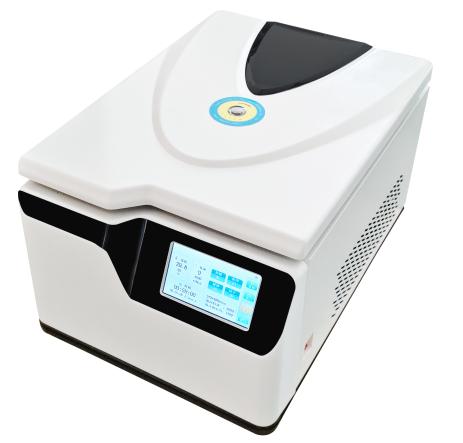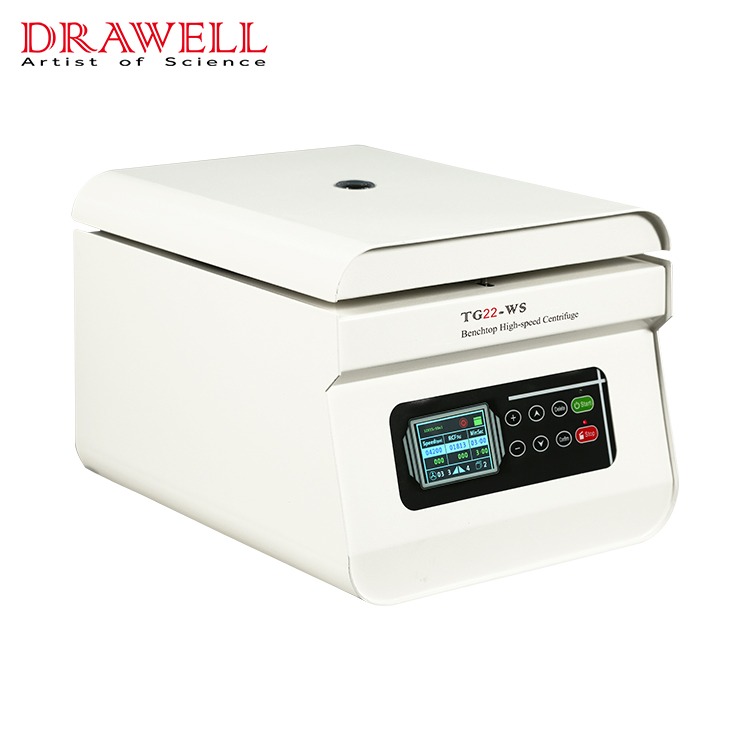In the fast-paced world of scientific research, the goal of efficiency and precision has resulted in astonishing advances in laboratory equipment. Among these breakthroughs, high-speed centrifuges stand out as critical tools that allow scientists to separate, isolate, and analyze compounds at unprecedented speeds and accuracy. This article explores the recent technical advancements in high-speed centrifuge, examining how these innovations are revolutionizing laboratory processes across various scientific disciplines.

The Rise of High-speed Centrifuge
Centrifugation, a technique that uses centrifugal force to separate particles from a solution, has been used in laboratory processes for decades. The introduction of high-speed centrifuges considerably improved the possibilities of this technology, allowing for faster and more precise separations.
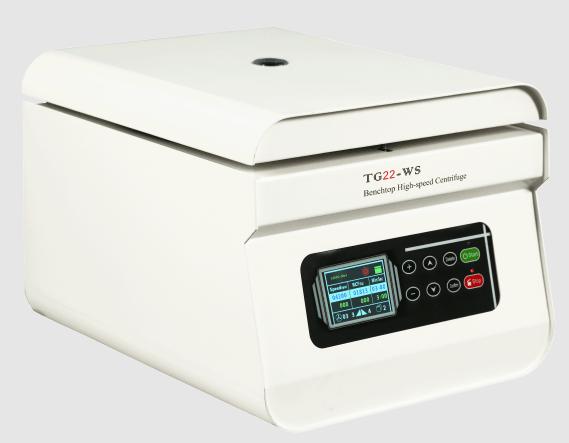
Key Technical Advancements in High-Speed Centrifuge
1. Revolutionary Rotational Speeds
Recent advancements in high-speed centrifuge technology have seen a remarkable increase in rotational speeds. The ability to achieve higher revolutions per minute (RPM) facilitates faster sedimentation and separation of particles in the sample. This acceleration not only expedites experimental processes but also allows for more efficient isolation of components with varying densities.
2. Innovative Rotor Designs
The evolution of rotor designs stands out as a key element in the recent progress of high-speed centrifuge technology. Modern centrifuges offer a range of rotor options, from fixed-angle rotors to swinging bucket rotors, each designed to cater to specific research needs. These innovations enhance the versatility of high-speed centrifuges, allowing scientists to customize their setups for optimal performance across diverse sample types.
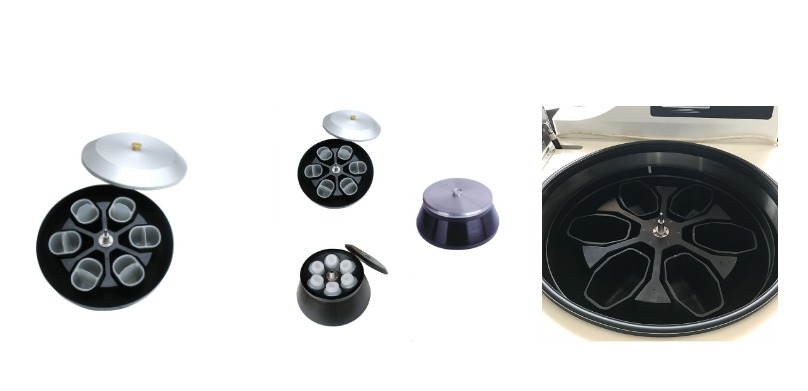
3. Advanced Cooling Systems
Heat generation during high-speed centrifugation can pose challenges to sample integrity. Recent developments in cooling systems have addressed this concern by efficiently dissipating heat, ensuring that extended run times do not compromise the quality of samples. Enhanced cooling capabilities contribute to more reliable and reproducible results, particularly in experiments requiring prolonged centrifugation.
4. Digital Controls and Automation
The integration of digital controls and automation features represents a significant leap forward in centrifuges. Researchers now benefit from programmable settings, user-friendly interfaces, and precise control over key parameters such as speed, temperature, and acceleration. Automation not only streamlines operations but also reduces the risk of human error, ensuring consistent and reproducible results.
5. Compact and Energy-Efficient Designs
Engineering advancements have resulted in more compact, energy-efficient high-speed centrifuge designs. These streamlined equipment save space in the lab and help to reduce energy usage, which contributes to sustainability. The combination of efficiency and eco-friendly design aligns with the contemporary emphasis on resource conservation in laboratory settings.
6. Versatility in Sample Handling
The most recent high-speed centrifuge types provide greater adaptability in sample handling. These systems can handle a wider range of sample volumes, sizes, and types, making them useful in a variety of scientific areas. The capacity to handle a variety of samples provides a level of versatility that is critical for researchers working on multiple topics.
7. Applications Across Scientific Fields
- Biomedical Research
High-speed centrifuges are invaluable in biomedical research for tasks like cell fractionation, DNA and RNA isolation, and protein purification. Accelerating these processes contributes to breakthroughs in understanding diseases and developing novel therapies.
- Clinical Diagnostics
Clinical laboratories leverage high-speed centrifuges for quick and accurate separation of blood components, aiding in diagnostics and disease monitoring. The efficiency of these centrifuges supports timely and reliable patient outcomes.
- Pharmaceutical Development
In pharmaceutical research, high-speed centrifuges play a crucial role in drug development. From isolating active compounds to ensuring the quality control of pharmaceutical products, these advancements expedite crucial stages of drug discovery.
- Material Science
Researchers in material science benefit from high-speed centrifuges for the separation and analysis of particles, polymers, and nanoparticles. These applications contribute to advancements in material design and development.
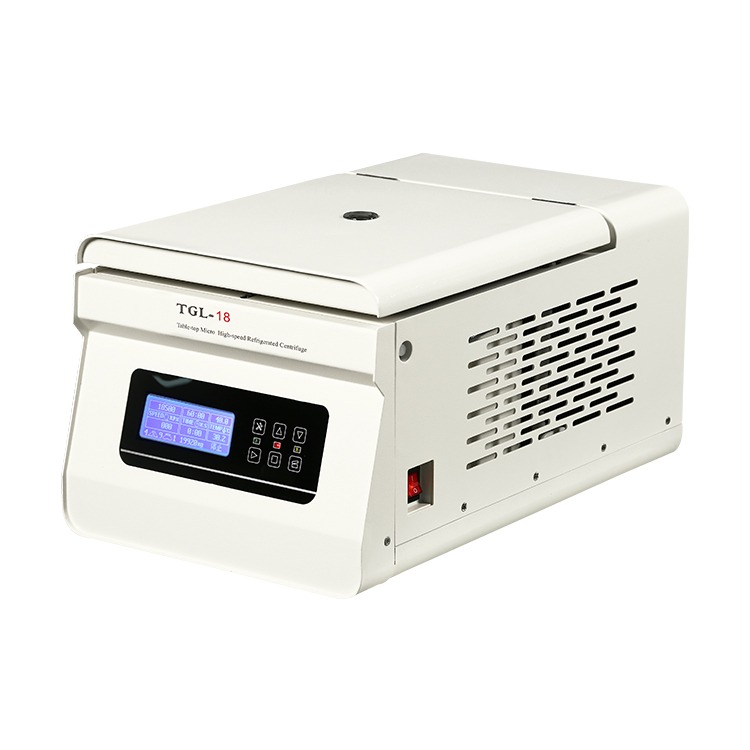
Challenges and Future Prospects of High-speed Centrifuge
1. Challenges
| Challenges | Description |
| 1. Mechanical Stress and Wear | High speeds can lead to mechanical stress, affecting equipment durability. |
| 2. Heat Generation | Increased speeds may result in heat generation, impacting sample integrity. |
| 3. Balancing and Vibration Issues | Maintaining balance at high speeds is challenging and can cause vibrations. |
| 4. Sample Contamination | Risk of sample contamination due to high rotational forces. |
| 5. Energy Consumption | High-speed centrifuges may consume more energy, impacting operational costs. |
| 6. Noise and Safety Concerns | Noise levels and safety concerns associated with high-speed operation. |
| 7. Compatibility with Sensitive Samples | Compatibility challenges with sensitive samples due to high forces. |
| 8. Scalability Issues | Challenges in scaling up high-speed centrifuge systems. |
| 9. Maintenance Complexity | Increased complexity in maintenance at higher speeds. |
| 10. Cost of High-speed Equipment | Higher costs associated with designing and manufacturing high-speed equipment. |
2. Future Prospects
| Future Prospects | Description |
| 1. Enhanced Safety Features | Development of advanced safety features to mitigate risks associated with high-speed operation. |
| 2. Improved Material Technologies | Utilization of advanced materials to enhance equipment durability and reduce wear. |
| 3. Precision Control Systems | Implementation of precise control systems for better balancing and vibration control. |
| 4. Automation and Robotics | Integration of automation and robotics for improved handling and maintenance. |
| 5. Customization for Varied Samples | Development of centrifuges with customizable settings for different sample types. |
| 6. Continuous Monitoring Systems | Implementation of continuous monitoring systems for predictive maintenance. |
| 7. Research in Scalable Technologies | Research and development focused on scalable high-speed centrifuge technologies. |
| 8. Integration with Imaging Technologies | Real-time monitoring of sample separation, coupled with imaging analysis, may provide researchers with more comprehensive insights into their experiments. |
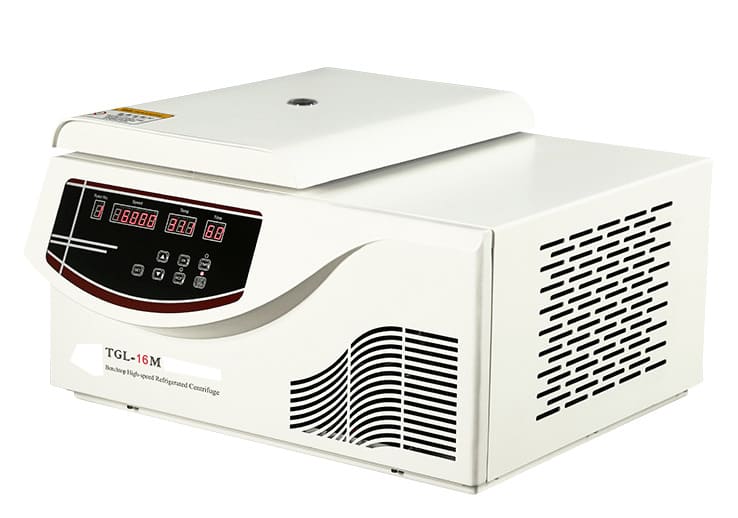
Conclusion
Technical advancements in high-speed centrifuges are transforming the landscape of laboratory research, fostering advancements in a variety of scientific fields. As these technologies continue to improve, high-speed centrifuges will play a crucial role in unlocking new horizons of knowledge and contributing to the accelerated pace of scientific innovation.

